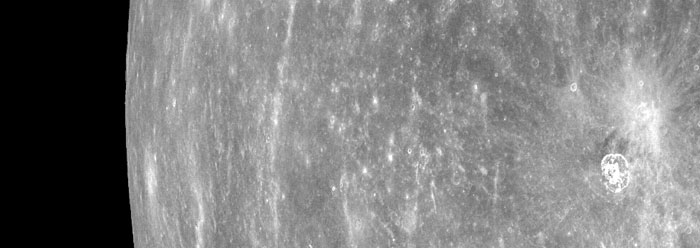Mercury, the closest planet to the sun, rotates so slowly that one day there lasts about 59 earth days. The planet has only three days in each of its years, and the sunny side is so hot that lead would easily melt on its surface.
Mercury possesses unique characteristics, and new data from the Messenger spacecraft are providing clues to its origin. But those clues point in the opposite direction to what astronomers expected.
In a Q&A with Space.com, Messenger's principal investigator, Sean Solomon, said he had long been interested in how Mercury acquired its peculiarities, including a huge core that is "twice as large a fraction [of its mass] as Earth or Venus or Mars."1 A huge iron core would account for Mercury's tremendous density, but according to naturalistic origins models, "Mercury can't be anywhere near as dense as it actually is."2
Space.com reported that the Messenger data are "delivering some tantalizing surprises," among which are "surprisingly high levels of sulfur at the planet's surface."3 But assuming that the planet formed naturally and close to the then-forming sun, lighter-weight elements like sulfur should have been "lost in space," Solomon told Reuters.4 And yet Mercury has "high levels" of sulfur.
In the Space.com Q&A, Solomon commented, "I'm now fascinated by the magnetosphere."1 And it is small wonder that he is, because for many years the "dynamo theory" (which has since been shown to be false) was the only explanation offered for magnetic fields on rocky planets that are supposed to be billions of years old. However, this theory requires a molten magma core. And Mercury is so small—only slightly larger than the moon—that its core should have cooled into a solid millions of years ago.2 Therefore, it should not have a magnetic field at all, let alone one that is steadily decaying on a thousands-of-years trajectory.5 And yet it does.
Messenger's new magnetic measurements fail to explain why Mercury has a magnetic field. Instead, they add ammunition against a naturalistic origin for the planet. Scientists did not expect to discover that Mercury's magnetic field is lopsided, but the 2011 Messenger data showed that it is stronger in the north than it is in the south.4 What natural process would cause that?
Mercury is packed with peculiarities, and thus its origin is too hard for natural forces to explain. Distinctive qualities point to purposeful origins, and even Messenger project scientist Ralph McNutt told Space.com, "Mercury really is a world in and of its own."3 If nature formed the planets from the same cloud of space debris, then why are they not uniform in constitution, orientation, and placement?
According to Space.com, "Scientists don't fully understand the import of many of Messenger's early findings."3 In light of what are best explained as Mercury's purposeful peculiarities, and of its young-looking magnetic field, this statement might be better rendered as: "Evolutionary scientists don't understand why Messenger's early findings show that Mercury looks both young and uniquely created."
References
- Moskowitz, C. When Messenger Arrives in Orbit: Q&A With Sean Solomon, NASA's Mercury Boss. Space.com. Posted on space.com March 11, 2011, accessed July 7, 2011.
- Psarris, S. 2004. Mercury—the tiny planet that causes big problems for evolution. Creation. 26 (4): 36-39.
- Wall, M. NASA Spacecraft Reveals Mercury's Surprising 'Personality'. Space.com. Posted on space.com June 16, 2011, accessed July 7, 2011.
- Klotz, I. Mercury's origins may differ from sister planets. Reuters, June 16, 2011.
- Humphreys, D. R. 2008. Mercury's Magnetic Field is Young! Journal of Creation. 22 (3): 8-9.
Image credit: NASA/Johns Hopkins University Applied Physics Laboratory/Carnegie Institution of Washington
* Mr. Thomas is Science Writer at the Institute for Creation Research.
